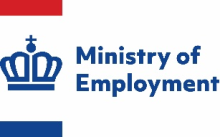The Danish Labour Market Model
In Denmark, pay and working conditions are generally regulated by collective agreements.
The Danish Labour Market Model
The Danish labour market is known for high job mobility, flexibility, competitiveness and high-quality working conditions. The labour market is, to a great extent, regulated by the various players in the labour market themselves, in contrast to regulation by legislation. Pay and working conditions are typically laid down by collective agreements concluded between trade unions and employers' organisations. This system of labour market regulation is referred to as the Danish Model.
However, the Danish legislation does include minimum requirements for certain aspects including e.g the working environment, holiday, proof of employment, equal treatment and equal pay.
Trade unions
The trade unions play a pivotal role in the Danish labour market, and there is a high level of union membership among Danish workers.
All workers are free to join a trade union but membership of a trade union is not obligated by law. An employer may not demand that an employee is a member of a particular union nor that an employee is not a member of a union.
If a worker chooses to become a member of a trade union, their choice of trade union depends on their training/position and workplace. The various trade unions are associated with specific unemployment insurance funds, but a worker does not need to be a member of both a trade union and an unemployment insurance fund – it is possible to be a member of just one of these organisations, independently of the other.
At national level, trade unions negotiate collective agreements with employers’ organisations. In addition, many workplaces have union representatives that represent the trade unions at the company, participate in consultations with the management, and, in some cases, represent the workers in wage negotiations.
Trade unions can also assist with cases regarding pay and working conditions and can help in connection with work-related injury cases, rehabilitation, etc. Some trade unions also offer personal consultancy and career planning insurance, etc. These offers vary according to the industry with which the trade union is associated.
Collective agreements
In Denmark, employment conditions can either be agreed upon or negotiated between the employee and the employer, or negotiated through a collective agreement between unions and employer associations. Neither Danish nor foreign companies are legally required to comply with or conclude a collective agreement.
A collective agreement (overenskomst) is an agreement between two parties about the working conditions that apply to workers in a specific company or industry. The parties to a collective agreement are, on the one side, either a trade union or a collective bargaining unit, and on the other side, an individual employer, a company or an employers' organisation.
Collective agreements contains provisions regarding for example, salary, working hours, education/training, retirement, and rules for salary in case of illness or contract termination.
Some employees are not covered by collective agreements. In these cases, employees have contract freedom and are able to negotiate, form and influence their own terms of employment directly with their employer.
Legal resources
Not applicable
